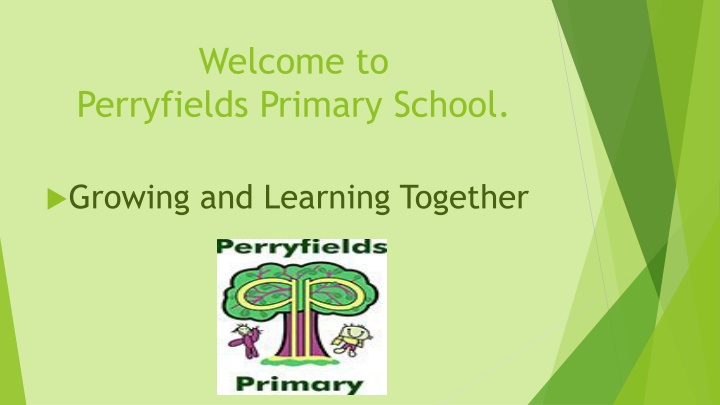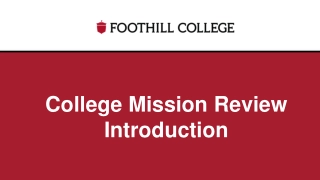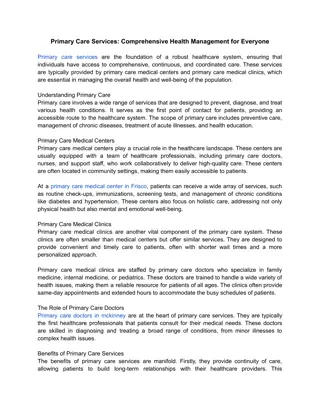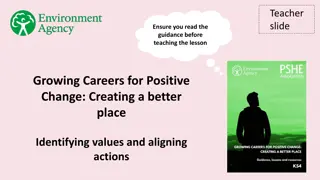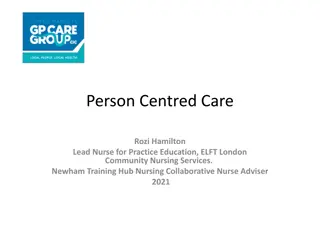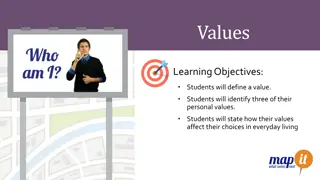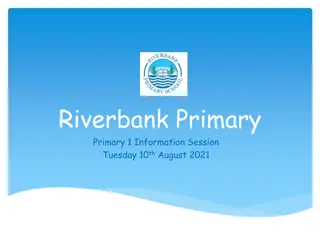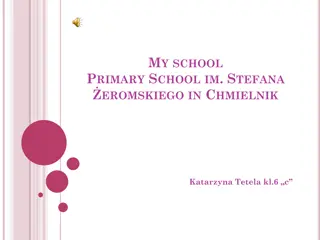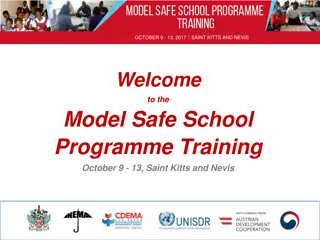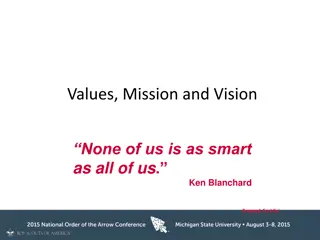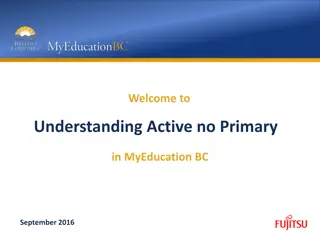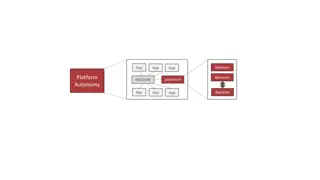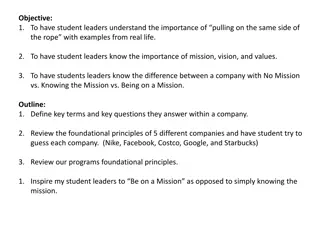Perryfields Primary School Mission and Values
Perryfields Primary School is committed to providing a rich environment to develop enquiring minds and confident communicators. Their values and curriculum focus on collaboration, honesty, perseverance, and the Building Learning Power principles. The school's leadership team is dedicated to supporting students' growth and development. It emphasizes the importance of accurate contact details for effective communication in case of emergencies.
Download Presentation

Please find below an Image/Link to download the presentation.
The content on the website is provided AS IS for your information and personal use only. It may not be sold, licensed, or shared on other websites without obtaining consent from the author.If you encounter any issues during the download, it is possible that the publisher has removed the file from their server.
You are allowed to download the files provided on this website for personal or commercial use, subject to the condition that they are used lawfully. All files are the property of their respective owners.
The content on the website is provided AS IS for your information and personal use only. It may not be sold, licensed, or shared on other websites without obtaining consent from the author.
E N D
Presentation Transcript
Welcome to Perryfields Primary School. Growing and Learning Together
Our Mission To provide a rich, inspiring and engaging environment to develop lively, enquiring minds and confident communicators. Vision for Learning Our school community works as one to ensure that pupils receive a rich, inspiring and engaging education. Every child is taught the knowledge and skills to become independent lifelong learners, aspiring to the highest standards of achievement in all aspects of their life.
Our Values and Curriculum Drivers Our 12 Values Our School Drivers Collaboration Honesty Perseverance Enrichment of vocabulary/language and communication, including oracy Confidence Independence Respect Personal Development Courage Kindness Responsibility Building Learning Power the 4R s: Happiness Patience Tolerance (Resourcefulness, Reflectiveness, Reciprocity and Resilience)
Building Learning Power (BLP) Children use the 4 R s from BLP to help them become more independent learners:- Resourcefulness Resilience Reflectiveness Reciprocity
Introduction to our Senior Leadership Team Head Teacher Mrs Jones Deputy Head Mr Spittle Inclusions Manager Mrs Holtham Business Manager Mr Kirby EYFS Lead Mrs Holtham Y1 & Y2 Phase Leader Mr Harris Y3 & Y4 Phase Leader Mrs Houghton Y5 & Y6 Phase Leader Mr Billings Family Link Support Mrs Bryan/Miss Maskell Please see our school website for all staff names, subject responsibilities and all other information. If there are any concerns about your child, please arrange to speak to or meet your class teacher first. If you have any further concerns, please contact your Phase Leader.
Contact Details At the beginning of every new school year, we send home paper copies of the Contact Forms that we hold securely in school. This includes all of the important information that we hold on SIMS including addresses, telephone numbers, medical information etc. It is vital that you check the accuracy of the information and return it to school without delay. If we do not have updated contact details for your child, this means that in the event of any real emergency, we have no means of contacting you. We require 3 emergency contacts for each child. Please note that the people named will be contacted in the order in which they are listed on the completed form.
Consent for Photographs With the changes to the Data Protection Act 2018 (GDPR), we need to have your consent to take your child s photograph. As part of our evidence for learning, staff in school take photographs of individual children and groups which are then placed in exercise books. We do not use these pictures elsewhere unless we have your full consent to do so. With this in mind, we have clarified the consent sought for photographs so that parents/carers are fully informed. Please make sure that you read the Consent for Photographs letter when it is sent out in September and return it as soon as possible.
Class Charts Positively Promoting Learning and Behaviour Class Charts is used to monitor the learning behaviours of pupils. It instantly reinforces the choices that pupils make, recognising both positive and negative behaviours that have been displayed in school. Parents are invited to engage with Class Charts so that, as soon as a point has been issued, they are notified, enabling them to have a supportive conversation about their child s positive achievements or negative behaviours. From September 2023, we are adopting a restorative approach to behaviour management. Restorative practice is built on values which separate the child from the behaviour and develop strong and trusting relationships. It aims to support pupils in developing their ability to self-regulate and reflect upon their actions, whilst allowing them to build, maintain and repair relationships with staff and peers.
Class Charts Positively Promoting Learning and Behaviour Class Charts points fit alongside our 3 school rules, Ready, Respectful, Safe. For example: Ready Correct full uniform worn, correct PE uniform ready, homework completed, being attentive etc Excellent manners, living our school values, give everyone a turn, actively listening to the speaker, showing kindness, sharing resources, respecting our school environment and equipment etc Respectful Safe Following rules and routines, moving around safely Wonderful Walking, playing safely, using equipment sensibly, playground conduct, orderly lining up etc Praise Assembly All the efforts and achievements of pupils, both in and out of school, are recognised during Praise Assembly every week.
Class Charts Positively Promoting Learning and Behaviour Low Level Behaviour Management STEP 1 Before a negative behaviour point is allocated, staff will address pupils and always give the appropriate number of reminders of the expected behaviour allowing for them to put things right and show responsibility. If the negative behaviour continues after a member of staff has given an appropriate number of reminders, relative to the needs of the child, there will be a private warning outlining the behaviour and the consequences if it continues. If the behaviour continues, the pupil will be asked to move to the reflection table within the classroom. This will be recorded as negative behaviour point on Class Charts. STEP 2 STEP 3 STEP 4 If the pupil continues the behaviour, they will be asked to move to the parallel classroom. STEP 5 Following the incident, there will be a restorative conversation with the member of staff. On occasion, situations may arise which warrant a different type of consequence, such as a lunchtime or after-school detention. Serious breaches could result in fixed term suspension or exclusion at lunchtimes.
Class Charts Positively Promoting Learning and Behaviour More Serious Behaviour Incidents Occasionally, children make the wrong choice and behave in such a way that can affect the safety and learning of others. In such situations, parents/carers will be informed and meetings held with Senior Staff/SENCO to ensure that the right support is in place. Unfortunately some more extreme behaviours could result in a Fixed Term Suspension i.e. sessions missed from school and work provided, being collected and taken home for lunch time etc Please refer to our school s Behaviour Policy
Class Charts Promoting Wellbeing Class Charts can also be used monitor the wellbeing. Using this tool, you can instantly inform the school of any appropriate information so that staff are ready to support children as appropriate.
Our School Website and Class Blogs Please visit our school website where you will find important information. Including newsletters, policies, procedures, calendar dates, information regarding Educational visits , lunch menus and a lot more. Please take the time to take a look. Class Blogs Each class has a Class Blog on the website, which provides lots of curriculum information, homework, daily lessons, photographs and a lot more. Please take a look and feel free to add a comment. If you want to know what your child has been learning, the best place to visit is their Class Blog.
On-line Safety This is a real priority, particularly as we are often faced with incidents that could potentially place children at risk. In the meantime, please take a look at the on-line safety leaflet on the website for information. Please take time to watch the links as they are very informative. The best advice is to always be the POS (parent over shoulder) so that you are fully aware of your child s online activity. From experience, most of the incidents have occurred when the child has been left to access their devices when not in the presence of a parent/carer. Please continue to check your child s on-line use and ensure that they are not accessing apps, sites etc that are not age-appropriate.
Social Networks Children attending Perryfields Primary should not have access to Facebook, Instagram, Tik Tok or other similar sites. The minimum age is 13 years old. We also ask that parents/carers refrain from using social networking sites to share any school-related concerns/issues. We have excellent lines of communication which are available to all parents/carers. Please make use of them to keep us informed of any issues that might be concerning you. The school does have a FaceBook and Twitter account which we use to share good news stories and events.
Attendance Excellent attendance at school is a crucial factor to enable your child to make excellent progress and reach their full potential. Last year, the overall attendance for Year Y3E (now Y4S) was 91% and for Y3W (now Y4O) it was 93%. This means that, on average, half a day of learning per week was missed. Although we understand that pupils are occasionally ill, there is a growing number of pupils who are not brought to school by parents on a regular basis and, therefore, the children have poor attendance. We need you to work with us to improve our attendance overall. Please note that holiday leave during school term is NOT authorised unless there are exceptional circumstances. Sadly, we have a growing number of parents who feign illness to avoid being issued a penalty notice for taking unauthorised holiday during term time. Please be honest from the start as the children do like to talk about their experiences. If we have reason to believe that this is the case, the absence will not be authorised. Home visits are also completed.
Attendance and Punctuality We consider punctuality to be very important and helps to form habits for life in the future. Punctuality is also very important to ensure the best possible start to the day. Being late for school reduces learning time and if your child is 5 minutes late every day, they will miss three days of learning each year. An average attendance of 80% or less across a child's school career adds up to missing a whole 2 years from school. Added to which, lateness and a disregard for punctuality does not instill the right attitude towards school and learning. Please note your child finishes school at 3:25 pm (unless attending an after school club or POSH) therefore please ensure they are collected on time. If in the event of an emergency, contact the school office to inform us that you will be late.
Uniform Any children not wearing school shoes (except for those who are medically exempt) will be asked to wear their school P.E. black pumps. If they don t have any in school, the school will provide pumps for the day. As an inclusive school, we are aware that a different approach for some children is needed. In these circumstances, alternative arrangements will be made. School uniform is available to order from A Oakes in Rood End, Clive Marks in Bearwood or Somal Fashions in Quinton. The wearing of jewellery is not allowed, with the exception of a standard watch and earrings which must be plain, small studs, for safety reasons. Even these will have to be removed for P.E. We do not allow earrings to be covered with a plaster. Jewellery may be worn for religious or cultural reasons, with appropriate safety precautions. Please note that children should not wear nail varnish to school. ALL CLOTHING SHOULD BE CLEARLY LABELLED WITH YOUR CHILD S NAME.
Uniform- Girls Grey pinafore dress Green gingham dress (Summer) Grey skirt /trousers/shorts Green cardigan or V-neck sweatshirt embroidered with Perryfields logo (optional) White shirt Green fleece (optional for outdoor use only) Green or grey tights/ grey or white socks Tie red/green Black sensible shoes no trainers or boots
Uniform - Boys Grey trousers/shorts Green cardigan or V-neck jumper embroidered with Perryfields logo (optional) Green fleece (for outdoor only) Grey or black socks Tie red/green Black sensible shoes no trainers
Uniform - PE Draw string sports bag PE Polo shirt in the house colour (ideally with school logo) Black PE shorts Black pumps for indoor PE Trainers for outdoor PE Grey or black tracksuit (optional for colder weather) Towel/trunks (not Bermuda)/ costume (not bikini) for swimming lessons.
Welcome to Year 4 Mrs Houghton Teacher in Ocean Class Miss Richardson Teacher in Sky Class Mrs Harrison Y4 Teaching Assistant Miss McGettrick Y3 / Y4 Teaching Assistant We look forward to welcoming you and your child to Year 4
Year 3/4 Expectations Uniform BLP Homework PE kits Being prepared for the day - spelling book, planner and reading book, water bottles and healthy snacks Incomplete work defiance behaviour recovery
Reading Success in reading is fundamental to becoming a successful learner. It is not a performance or a race to the next book or band colour. It is not a test. Reading is all about enjoyment, learning and developing understanding about the world around us. Comprehension Being able to read the words does not necessarily mean you understand what you have read. Your child might sound like a good reader but may not necessarily understand what the text means. The best way to develop understanding is to talk about texts.
Reading The Teaching of Reading in School Shared / paired reading Whole class teaching of reading skills Independent reading Reading for pleasure Focused reading comprehension activities Reading across the curriculum Class novels, stories and poems The Teaching of Reading at Home Should be fun and enjoyable Share a book for at least 15 minutes a day and TALK about it Sit and listen - don t do chores whilst your child is reading Explain the meaning of new words Check their understanding of what they have read by asking lots of questions Boys need to see that reading is something men do too
Writing Lower KS2 Terminology (needs to be known by the children) Year 3: Preposition, conjunction, word family, prefix, clause, subordinate clause, direct speech, consonant, consonant letter vowel, vowel letter, inverted commas (or speech marks ) Year 4: Determiner, pronoun, possessive pronoun, adverbial
Writing Lower KS2 Punctuation (to be taught, learnt and consolidated in following years) Years 3 and 4: - using commas after fronted adverbials [Amongst the trees, .] - place the possessive apostrophe accurately in words that are singular and in words with regular plurals [for example, girls , boys ] and in words with irregular plurals [for example, children s] - using and punctuating direct speech.
Writing Lower KS2 Sentence Structure Years 3 and 4: - extending the range of sentences with more than one clause by using a wider range of conjunctions, including when, if, because, although, despite, nevertheless - using conjunctions, adverbs and prepositions to express time and cause - using fronted adverbials [Under the moonlight, ]
Maths Builds on concepts taught in Year 2/3 but in greater depth Lessons focus on fluency, reasoning and problem solving Scaffolds and challenge provided in order to address all learning needs Times tables clubs Teaching of life skills such as time/ measure throughout the day
How I can help my child? Practise times tables and number facts regularly Notice the maths around you and discuss:- Shopping Cooking Travelling Time Play games Online games
Multiplication Tables Check Y4 National times table test in June 2024 Tests all the times tables up to 12 x 12, more emphasis on 6,7,8,9, 12 times tables Online test taking about 5 minutes 25 questions, 6 seconds per question Time to practise test format before the actual test Results to inform school of performance no pass mark Tools to help with times tables
Websites to help www.mymaths.co.uk Username: fields Password: nine www.timestables.co.uk www.mathschase.com www.purplemash.co.uk (individual log in details will be provided) www.transum.org/software www.mathsisfun.com www.ttrockstars.com (individual log in details will be provided)
Knowledge Rich Curriculum (KRC) In Year 4, our termly topics are: What the Romans Did for Us River Deep, Mountain High Anglo-Saxon Invaders The topics incorporate learning in Geography, History, English, P.E, Art, Science, Music and Design Technology, making them fully cross-curricular. An educational visit to Wroxeter Roman City has been booked for Tuesday 17th October. A free visit from Severn-Trent water will be arranged for the Spring Term. We hope to arrange an Anglo-Saxon themed educational visit for the Summer Term. Y4 pupils also have the opportunity to take part in a 2-night residential to Frank Chapman Outdoor Centre in Bewdley.
Also After School Clubs P.E. / Outdoor Learning Workshops Website for information
Entering and leaving school Year 4 children come into school through the main playground door. They will also be released from this door at the end of the day. Your child will only be released at the end of the school day into the care of their parent/carer unless attending an after school club or POSH. A password will be used if another relative/person collects instead of the usual adult. Lockers are situated in the upstairs corridor outside the Year 4 classrooms. A trolley for lunch boxes is kept at the bottom of the stairs.
Thank you for attending! Any questions? Mrs Houghton and Miss Richardson
